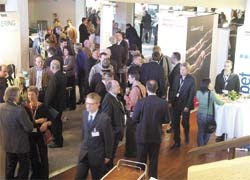Learning what can and might be done with MRI
Austria - In recent years scientists have produced multi-channel MRI systems, new coil concepts and new contrast media, all of which have helped to shift radiology towards the centre of patient care.

Covering such innovations and their uses, the International Magnetic Resonance Imaging (MRI) Symposium, founded by Professors Lissner, Doppman and Margulis, inevitably became an important entry in radiologists’ diaries. At the 12th symposium – held this year at Garmisch-Partenkirchen, Austria - Professor Maximilian Reiser said: ‘We will build bridges with other diagnostic procedures in the usual way, to evaluate their significance for developments in MRI.’
The congress highlighted the fact that, particularly in molecular imaging, there is a high synergetic significance for various procedures, e.g. positron emission tomography, optical imaging, along with new developments in MRI. These and their possibilities for clinical use were discussed.
The success of last year’s MRI symposium, with participants from 17 countries, and much positive feedback, led the organizers, Professor Hedvig Hricak and Professor Reiser, to mostly maintained that structure.
Meet the experts
Due to high demand, the interactive small group discussions of interesting cases with renowned experts were extended. These focused on ear, nose and throat (ENT).
For the basic MRI course the professors said they had particularly aimed to present practical and understandable information. Also, at the end of the first day of teaching, they had introduced typical clinical cases, so that everything taught could be tested interactively with the course participants.
This event is certified by the German Academy for Advanced Training in Radiology and the Bavarian Medical Association. Due to the broad spectrum of topics covered attendance is almost enough to qualify for a year of training credits.
The 2009 MRI symposium will be held in Garmisch.
01.05.2007











